We’re living through an era of big-stage diplomacy. Every week, it seems, world leaders gather at forums and emergency summits to mitigate another major crisis. And amid these global get-togethers, the size of one’s entourage – from bag-carriers to bodyguards – has become more than a matter of appearances. For some countries, it is a highly public way to display power and prestige; the bigger the entourage, the better it reflects on the finances and domestic clout of a leader and their nation.
This is particularly true in the gilded Middle East, where even minor royals travel everywhere with a retinue of acolytes and sycophants. In the US, too, with its culture of political showmanship, presidents always bring “The Beast”, a limo kitted out with armour and Bond-esque gadgets (although, given the number of assassination attempts made against US leaders, there are practical reasons for this). It’s no coincidence that Kim Jong-Un, the North Korean leader with a love for the grandiose, has copied the look. For other leaders, particularly in tax-heavy northern Europe, a humbler style of travel is better suited, though there is the danger that their smaller entourages will be seen as a sign of weakness by their better-padded counterparts.

Here in Turkey, we get regular insights into the mindset of leaders at the many diplomatic events that the country hosts. Last month, on a single day, it provided the neutral ground for a gathering of Nato foreign ministers and a planned head-to-head between presidents Putin and Zelensky. The low-key tone of Zelensky’s arrival matched his sartorial style: he descended the aeroplane steps alone. Vladimir Putin pulled what is arguably the bigger power move by keeping everyone guessing until the last minute – before not showing up at all.
President Erdoğan’s entourage is a key part of his image: one of the main duties of his huge squad of special advisers is to be on the tarmac to greet him every time he arrives back in the country. This massive security detail, often with dozens of vehicles, runs reasonably smoothly through the neatly planned roads of Ankara but gets jammed in Istanbul’s snarled traffic. When I saw him arrive in Sarajevo in 2018, his motorcade seemed to dwarf the city: locals stared in amazement as it passed through the streets. Erdoğan’s insistence on bringing his own security to Queen Elizabeth II’s funeral, and the UK’s insistence that he could not, meant that he missed the event. But while Turkey celebrates strongman culture, it is also in the doldrums of an economic crisis and Turks are increasingly furious at the amount that the country spends on Erdoğan’s entourage – reportedly millions of lira per day. Other extravagant leaders take note: your entourage only looks as good as your economy.
Lucinda Smith is Monocle’s Istanbul correspondent. For more opinion, analysis and insight, subscribe to Monocle today.
It’s a sunny April morning in the Japanese capital and the halls of Tokyo Big Sight, the city’s waterfront convention centre, are ringing with a cacophony of barks and yelps. This is Interpets Asia Pacific, Japan’s top pet-products trade show, and the 2025 edition is bigger than ever. Over four days, some 980 exhibitors (including 236 from overseas) and almost 78,000 visitors – industry players, as well as pet owners and their pooches – will pass through the centre to see the latest pet-care innovations. Food, fashion, furniture, hotels and wellness are just some of the sectors on show. The Lion Pet seminar on toothbrushing for dogs is standing room only, there’s a bun fight for chihuahua frocks at canine fashion brand Moncheri and, in the grooming area, toy poodles are being snipped, teased and coiffed in a competition.

Japan’s pet-industry numbers are impressive: the country’s pet-product market was estimated to be worth ¥1.9trn (€11.6bn) last year, up 21 per cent from 2019. Pet food accounts for 38 per cent of all sales, while pet supplies rake in 17 per cent. As demographic shifts take their toll, there are now more pets than children in Japan – 15.9 million pets compared to about 14 million people under the age of 15 in 2024 – and even though the number of pets is slightly in decline, the amount of money spent on pet care has been growing every year since the pandemic.
The sheer number of exhibitors, particularly in the luxury sector, attests to the sector’s breadth and depth. Between the organic meals, herbal fur packs and full-body hair-drying machines, it’s clear that Japan’s pet world has moved into the “lifestyle” sector. Tavo is showing the latest car seats for dogs and Grand Motor has a full mise en scène for a camper van adapted for pet use, complete with fans, water and beds. OGK Giken is a favourite for its stylish over-the-shoulder pet carriers, while Japanese cycle brand Maruishi is drawing attention for its brown-and-green Pet Porter electric bike with pet-friendly front basket.
Pet food is an important sector, encompassing dog-friendly dashi stock, deli dishes and fluffy birthday cakes. Clothes are everywhere too. Tombow, best known in Japan as a school-and-office stationery brand, is showing a collection of climate-sensitive dog jackets and pet harnesses to help hoist ageing dogs along on their daily stroll. Mimimerry is displaying a selection of lace and satin crinoline dresses with ¥50,000 (€307) price tags and names such as Miracle Echelle. Visitors can find everything from Birkin-style dog bags to embroidered bomber jackets for pets.


Companies from the wider region are also making their debut. Heaven Yang is the business manager of Guangzhou brand DJJ Dog Shoes, which sells tiny trainers for small dogs, while Velver from Hong Kong makes gold necklaces using the nose prints of pets. “China is upcoming and growing – but we see growth potential for dog shoes in Japan too,” says Yang. “It’s an underdeveloped market.” Meanwhile, Lee Seung Jae, the CEO of Pengineer, is introducing the Abuba, South Korea’s bestselling dog-carrier backpack, to Japan. The company also produces premium dog goggles, which promise safety, comfort and eye protection from dazzling sunlight.
Over at Airbuggy – whose ubiquitous state-of-the-art pet carts ferry Japanese dogs around town in enviable splendour – long queues are already forming. The scale of the stand reinforces the brand’s dominance. “We wanted to broaden awareness of the pet-stroller market,” says Airbuggy’s Yoko Shimada. “With more than 150,000 Airbuggy pet-cart users, we also wanted to take the opportunity to provide free maintenance stations for our customers and show them our selection of accessories.”

As families shrink, dogs are increasingly lavished with attention as though they were beloved offspring. “We are seeing a growing desire for unique, customised products,” says Shimada. “People want to create their own one-of-a-kind stroller where they choose the colours of the frame, carrycot, handle and drink holder, as well as adding studs and Swarovski decorations.”
Labradors are trying out Airbuggy’s large Air-Cruiser and there’s a long wait for the photo booth. Ageing is a big topic at the event, with owners seeking ways to extend the life of their canine companions. “It has been more than a decade since dog ownership peaked and many of those pets are getting on,” says Shimada. “We anticipate further growth, especially in sectors such as senior pet-care services and insurance. We also expect a rising demand for products and services tailored to specific categories, such as extra-large or smaller breeds. Internationally, we have begun to expand into key markets including the United States, Asia and Europe. In Europe, we have set up a stock point in the Netherlands and, from June, we will launch e-commerce to serve the broader EU market.”
Airbuggy is just one of a number of companies that have adapted human products to meet the demand for pet equivalents. Nappy brand Unicharm is storming the market with its animal nappies – pet-care sales at the company accounted for ¥139bn (€853m) in 2023 (1.7 times greater than 2018), amounting to 15 per cent of total sales.


Toothpaste giant Lion is another crossover success story. “People want to live with their dogs as long as possible, so there’s interest in health-related products – particularly, in our case, dental-care items,” says Lion Pet’s Akiko Ebihara. “We’re seeing growing attention being paid to dental brushes with ultra-fine bristles that can be selected according to the dog’s mouth size. We also receive a lot of inquiries not only about the products but also about how to establish toothbrushing as a comfortable, lasting habit, especially when dogs are reluctant.”
China’s increasingly affluent and dog-loving middle class is inevitably a big focus of attention. “Overseas, we are currently focused on Asia, particularly China, where we aim to contribute to the development of healthy habits for pets through our strength in oral-healthcare products,” says Ebihara. “In the future, we plan to extend our presence to other countries where many families have pets.”


This year also sees the debut of two new zones at Interpets: PetTech and Pet Disaster Preparedness. Vets are being coached in the importance of a business continuity plan in case of disasters, while pet owners are trying out a simulated evacuation scenario and being introduced to the burgeoning industry in preserved pet foods, emergency pet supplies and nursing-care products for injured animals.
Pet technology is likely to dominate the industry in coming years with GPS tracking, cameras, automatic feeders, smart toys and an array of online services and AI products. Panasonic is showing Ziaino, an air purifier designed to remove pet smells, while house builder Hebel Haus has spotted a niche in the market and is promoting its pet-centric developments.
Every day at Interpets, there are talks on business, healthcare and longevity. The Ministry of Agriculture, Forestry and Fisheries discusses pet-food safety laws and there are multiple awards, including one for long-lived dogs, cats and their families.
Where Japan leads, others follow and success here points to growth around the region. “The focus on pet wellness and advances in related technologies mean the pet market in Japan will evolve and diversify,” says Ebihara. “There’s a growing sense of pets as ‘family’.”
This article originally appeared in the Opportunity Edition newspaper 2025, created in collaboration with UBS for their Asian Investment Conference in Hong Kong
Visitors to the Burj Khalifa are usually content with a latte at Atmosphere on the 122nd floor and a view of Dubai from the observation deck. But last week I took a different lift – or rather three – for a peek inside what is billed as the world’s highest penthouse, which is now on sale. The sprawling Sky Palace is perched on the 107th and 108th floors of the world’s tallest building, some 700 metres above the ground. A monument to both altitude and attitude, it feels far removed from the metropolis that it overlooks. The penthouse inspires a sense of awe but there’s also a whiff of absurdity: from here, even popping to the shops is a 15-minute logistical exercise.
The first lift takes you up to the 73rd floor, where you’ll find a slick lounge with polished parquet floors and panoramic windows. From there, another whisks you to the 107th floor. One final ascent on the penthouse’s internal elevator brings you up to a vast space with double-height windows that allow you to look down on helicopters hovering below.

Want to nip out for dinner? Maybe you should consider investing in a parachute. Left something in the car? Then prepare for three lift journeys and a protracted chat with the valet. Even seasoned staff might find it exhausting. My ears are still popping.
We’re told that there’s interest in the Sky Palace among the usual suspects: a member of the UAE’s royal family has viewed it, as have several Emirati billionaires. A steady flow of prospective buyers has come from the US, Russia and China. But for all its height and hype, the Sky Palace enters a market that – dare we say it – is slowly coming down to Earth.
Luxury in Dubai is turning low-rise. Developers are shifting their focus to waterfront villas and low-slung hideaways, particularly in ritzy enclaves such as Jumeirah Bay, where homes are being sold for as much as $90m (€79m). Some 9,000 villas were completed in Dubai last year, with almost 20,000 more in the pipeline for 2025. Part of this shift is practical. Many people want to build to spec and avoid the awkwardness of sharing a lift (or several). But it’s also a sign of a maturing market. Demand remains high but supply is catching up. Sure, if you’re into brag-worthy views that stretch to the horizon, the Sky Palace delivers. Just don’t expect everyone in Dubai to be impressed, as tastes are clearly changing. And try not to drop your keys outside: it’s a long way down if you lose them.
Rashid is a Dubai-based journalist and a Monocle contributor.
Want to read more? Bjarke Ingels and Dubai-based developers ARM Holding are redrawing the city’s map, making it greener than ever. Click here for the full article.
Karol Nawrocki’s victory in Poland’s presidential election on Sunday has shaken Europe. A historian by training with no previous political experience, he narrowly won the second round of the election with 50.9 per cent of the vote. The win signals trouble for the country and its European partners. Backed by Maga Republicans and blessed by Donald Trump, Poland’s new president has promised to use his constitutional powers to veto any legislation coming from the desk of the country’s prime minister, Donald Tusk. In the short term, this could render Poland ungovernable as the new appointee clashes with ministers over everything from ambassadorial and judicial appointments to infrastructure bills.

Tusk increasingly looks like a lame duck and could be forced into a snap election as early as next spring. The liberal-leftist coalition that has governed Poland since 2023 is unlikely to hold and the country is at risk of returning to the conservative rule of the Law and Justice party, with the far-right Confederation party in tow.
To anyone who has visited Poland in recent years, that might come as a shock. The country has been in the throes of a manufacturing boom, with a ballooning middle class and Nato’s third-largest standing army, and was well on its way to becoming a new centre of economic and political gravity on the continent.
Yet all of this has clearly failed to cut through with voters and Nawrocki’s triumph risks pushing Poland away from Europe’s liberal mainstream. All major foreign-policy projects, including a bilateral partnership treaty with France, will likely hit a wall, as well as the pivot to establish a continental defence industry that is less reliant on the US. Tusk might continue to represent the pro-Ukrainian coalition in Europe but his allies will no longer be able to count on Poland’s backing. On the campaign trail, Nawrocki signed a declaration stating that he would never allow Ukraine to join Nato. This should be Poland’s moment to shine but this election has dulled its lustre. The European centre ground has taken another hit – and might not hold.
Mazzini is a journalist and regular Monocle contributor who is based in Poland. For more on Poland’s election – particularly on how it stopped election meddling with a digital umbrella – click here.
George Washington rarely shares the limelight in the capital that bears his name but the founding father’s bust has considerable company in the marble-clad headquarters of the Organization of American States (OAS). In the Hall of Heroines and Heroes of the Americas, Washington stares down Simón Bolívar, the great liberator of Latin America, plus more than a dozen historical figures from Ecuador to Jamaica.
This statuary reflects the curious conceit of Pan-Americanism: the most powerful country in the western hemisphere is but one among equals. That, at least, is the principle underpinning the OAS, a 77-year-old multilateral institution that was founded to encourage peaceful conflict resolution between neighbours.
So when Monocle takes a seat under the crystal chandeliers in the Hall of the Americas during a recent meeting of the Permanent Council, diplomatic protocol insists that the voice of St Kitts and Nevis, which has a population of about 47,000, has the same weight as the host country’s. Under the flags of 34 nations, delegates take turns interrogating the Colombian and Peruvian candidates for assistant secretary-general, one of whom will join the new chief, Albert Ramdin. Hailing from Suriname, Ramdin who assumes office on 30 May, is the first Caribbean OAS secretary-general. He takes up his role at a turbulent moment for the organisation and multilateralism more broadly.


Since its birth, the OAS has undeniably been a creature of Washington. Headquartered in the shadow of the White House, half its $99m (€88m) budget flows from the US Treasury. Outside, the monuments reinforce this idea. While a bronze Bolívar sits powerfully astride his horse in an adjacent plaza, his figure is dwarfed by the nearby obelisk bearing the name of the American Cincinnatus.
To its critics, the OAS is a mouthpiece for US foreign policy to enforce the 200-year-old Monroe Doctrine. Leftists deride it as the “Ministry of Colonies” or simply as an irrelevant organisation that has been unable to resolve chronic issues in counties such as Haiti and Venezuela. “If you look at the region’s most pressing challenges, where is the OAS?” says Rebecca Bill Chavez, president of Inter-American Dialogue.
Its adherents concede the inter-American system’s imperfections but argue that it has evolved to operate more independently from the US through laudable election-monitoring methods, a respected human-rights court and valuable regional co-operation on organised crime, narcotics and migration. From tense elections to disputed borders, the OAS has a track record of effectively wielding diplomacy in smaller countries. These elements, as well as the US stance that the region constitutes its backyard, are core ingredients of the western hemisphere’s relative geopolitical stability in the 20th and 21st centuries.
“Peace has been established in the western hemisphere for a long time – we don’t have open wars or major conflicts,” Ramdin tells Monocle, weeks before he takes office. But as Donald Trump’s administration reviews US membership and funding in all international bodies, the OAS presents a special case. Historically, Washington has propped up the organisation because it provides a multilateral veneer for advancing US interests. As the OAS ambassador from Antigua and Barbuda Sir Ronald Sanders puts it, “They regard the OAS as their property.” At a time when Washington is stripping away veneers, will the US invest in the plumbing and the fixtures or dispose of its pet diplomatic property entirely?
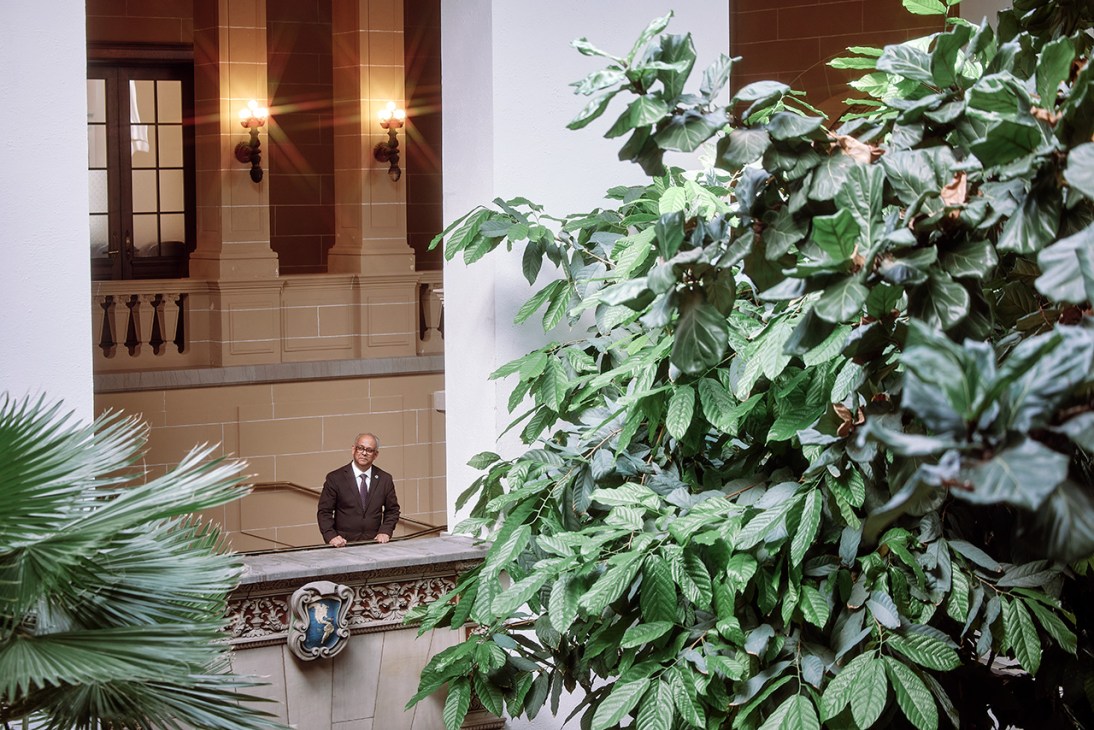
On the day we arrive in Washington, the news cycle is consumed by Benjamin Netanyahu’s second visit to the White House, a reminder of the current president’s Middle Eastern focus and preference for bilateral negotiations. Latin America and the Caribbean might feel like perpetually neglected neighbours but it wasn’t always this way. Monocle meets Brazilian ambassador Benoni Belli, the current Permanent Council chair, in the OAS headquarters’ interior patio, which flourishes with verdant gardens representing the flora of North, Central and South America, and the Caribbean. Inaugurated in 1910, the Pan American Union building embodies the era’s transcontinental spirit. It’s an amalgam of English, French, Portuguese and Spanish architectural influences that heralds co-operation among the New World’s young republics.
OAS by the numbers
Year founded: 1948
Member states: 34 (Cuba and Venezuela no longer send representatives)
Official languages: 4 (English, French, Spanish and Portuguese)
Elections monitored: More than 240
Years operating on the disputed Belize-Guatemala border: 22
Birth certificates and national ID cards issued: More than 19 million
Belli leads the way to a well-appointed office decorated with Brazilian artwork supplied by the OAS’s in-house museum and gives a history lesson. Founded in 1948 amid anti-communist fervor, Belli says, “The OAS gave a seal of legitimacy to the Monroe Doctrine.” At the height of the US-Soviet rivalry, the OAS turned a blind eye as military dictatorships committed gross human-rights violations in the name of anti-communism. Cuba’s communist revolution led to the island’s suspension in 1962 (the ban was rescinded in 2009; Havana declined the invitation). When the Reagan administration invaded fellow OAS member Grenada in 1983 without repercussions, the secretary-general resigned in protest over the institution’s perpetual sidelining in hemispheric geopolitics.
But with Latin America’s transition to democracy and the easing of Cold War tensions, the OAS flexed its muscles to operate with autonomy from Washington. Belli cites Nicaragua in 1990 when the socialist Sandinistas – a fervent foe of the Reagan-Bush administrations – agreed to elections and invited the OAS to monitor, on the provision that the US government stay out. The Sandinistas lost and couldn’t charge the Yankee imperialists with meddling.
“It was a golden era,” says Belli. “The OAS was able to safeguard democracy without giving the impression that it was simply a vehicle to impose American power in the region.”

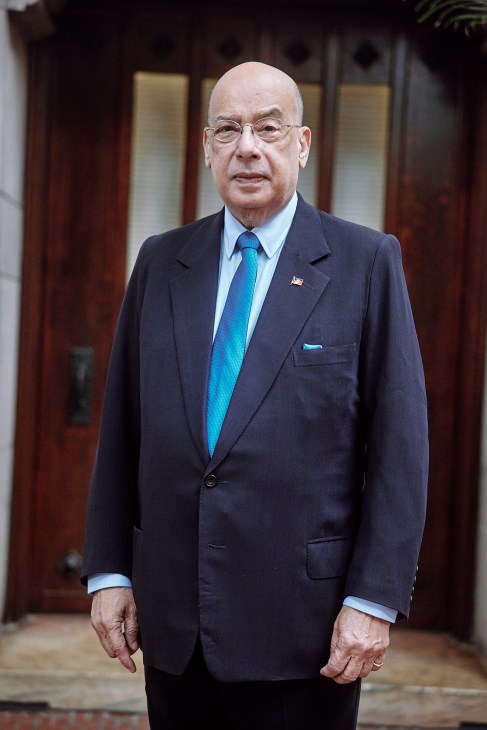
Flash forward a quarter century and the OAS’s gilt has tarnished. While there are still success stories such as an OAS diplomatic mission that mediated the post-election crisis in Guatemala last year, they are more the exception than the rule. In Nicaragua’s case, Sandinista revolutionary leader Daniel Ortega had the last laugh. Ortega runs a dictatorial regime with his wife, Rosario Murillo, and withdrew from the OAS two years ago. Venezuela, a perpetual thorn in the side of the organisation since Hugo Chavez’s rise to power, left in 2019. But under byzantine rules, Cuba and Venezuela continue to formally count as OAS members for voting purposes as the US made the sad spectacle in 2019 of seating an ambassador representing failed opposition leader Juan Guaidó.
“They must be laughing their heads off in Caracas and Havana every time we have to cast a vote knowing fully well that they are the jumbies – the ghosts – haunting this place,” says Sanders. Known as el decano or the “dean” as the body’s longest-serving ambassador, he holds court in the Delegates Lounge, shooing away a trio of Spanish-speaking staff and chiding Belli’s secretary for interrupting his soliloquy.
With his institutional wisdom, Sanders takes the Trump administration’s early moves in stride – and sees the OAS’s cosy relationship with its host country as an existential benefit. “President Trump will not release an advantage if he has one,” says Sanders. “To the extent that the US has dominated this place for such a long time, I think he might keep it in his back pocket.”
That perceived domination has spurred detractors and alternatives though nothing has yet supplanted the OAS entirely. The Union of South American Nations sits moribund 17 years after its founding while the Community of Latin American and Caribbean States has puttered along for more than a decade without a major splash. In 2021 former Mexican president Andrés Manuel López Obrador went as far as calling for the OAS’s replacement with a more autonomous organisation that would be “nobody’s lackey”. But the common thread among detractors is often bristling at criticism from the organisation, especially its non-partisan umpire the Inter-American Commission on Human Rights. In Mexico’s case, the commission has called out judicial reform as threatening the rule of law. And in March, it expressed concern over potential human-rights violations by the US for sending migrants to El Salvador’s notorious mega-prison.
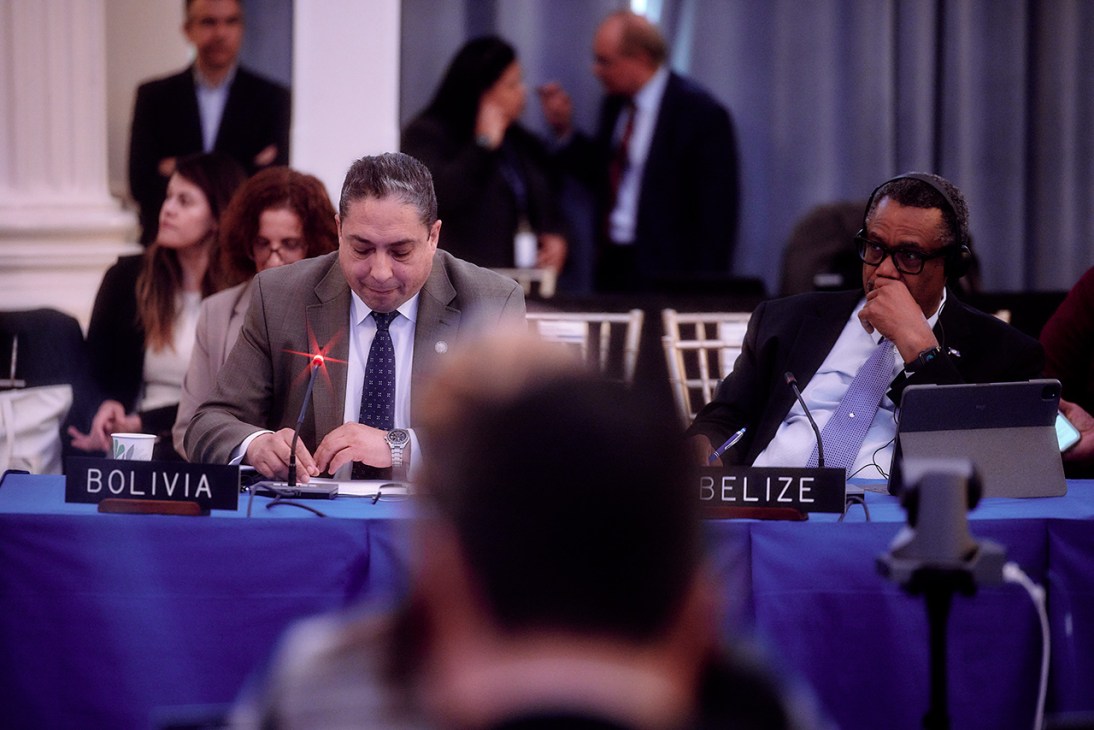
The latter communiqué will surely not endear the OAS to Trump but defunding the organisation would, ironically, hand a political victory to the Latin American left. During his last term, Trump became the first US president to skip the OAS’s flagship Summit of the Americas, a move interpreted as consistent with his disdain for Latin America. His predecessor’s signature foreign policy initiative, meanwhile, was the pivot to Asia. “The truth is that we have been at a crossroads for some time,” says Sanders. “The US has been ambivalent about the OAS for the past 20 years.”
But US secretary of state Marco Rubio, himself Cuban-American, has showered the region with attention, albeit to articulate Trump’s dim view of Latin America and the Caribbean as a hotbed of security concerns and the source of his immigration nightmares. Days after being confirmed in January, Rubio visited five Central American countries on his inaugural trip and stopped in the Dominican Republic, where he affirmed support for the host nation of the next Summit of the Americas in December (whether Trump will attend remains unknown). In March, he made a whistle-stop tour of the Caribbean, meeting six heads of state and publishing an op-ed in the Miami Herald asserting an “Americas, first” foreign policy.
The US did not immediately back Ramdin, who was initially tarred as a Chinese agent in right-wing circles. Rival candidate Rúben Ramírez Lezcano, the Paraguayan foreign minister, mounted an intensive pro-US lobbying campaign and even landed a coveted selfie with Trump at Mar-a-Lago. But the OAS’s independent streak reared again as the 14-vote Caribbean bloc held steadfast, insisting it was finally their turn to lead the body, and once four more votes were confirmed heading Ramdin’s way, Washington joined the bandwagon – currying favour with a newly oil-rich nation was ultimately deemed good politics.
For Rebecca Bill Chavez, who served in the Biden administration in Western Hemisphere Affairs and counts several OAS ambassadors among her confidants, the administration’s moves thus far are encouraging that the organisation has a future despite Trump’s hostility to multilateralism. “All the signals are the right signals,” she says.
Leading said future falls to the mild-mannered 67-year-old former Surinamese foreign minister and career diplomat. Ramdin is widely viewed as a technocrat who will keep a low political profile in stark contrast to his predecessor, Luis Almagro. The 10th secretary-general elevated the OAS’s profile with his poetically vociferous critiques of leftists authoritarians – much to the US’s delight – but also raised the hackles of member states frustrated at his freelance advocacy.
“[Almagro] was more general than secretary,” says Bolivian ambassador Héctor Arce Zaconeta, whose socialist government blames the OAS for an election audit that precipitated Evo Morales’s fall from power in 2019. “The new secretary-general has to facilitate dialogue as an international functionary, not a political activist,” says Belli more diplomatically.
Soon enough Ramdin will be called upon to mediate the region’s flashpoints. The OAS has a long-running role in keeping peace over disputed territory between Belize and Guatemala, which could erupt when The Hague rules as soon as this year. Tensions continue to ratchet up between Venezuela and Guyana regarding the disputed Essequibo region with March seeing a British, Dutch and US naval exercise to counter Venezuelan warships. The US’s newfound expansionist designs on the Panama Canal also threaten regional stability. Haiti, where the OAS has operated a birth certificate and national-identity-card scheme for decades, remains a basket case, though Ramdin has credibility in Port-au-Prince, having made more trips to the troubled capital than nearly any other Caribbean diplomat.

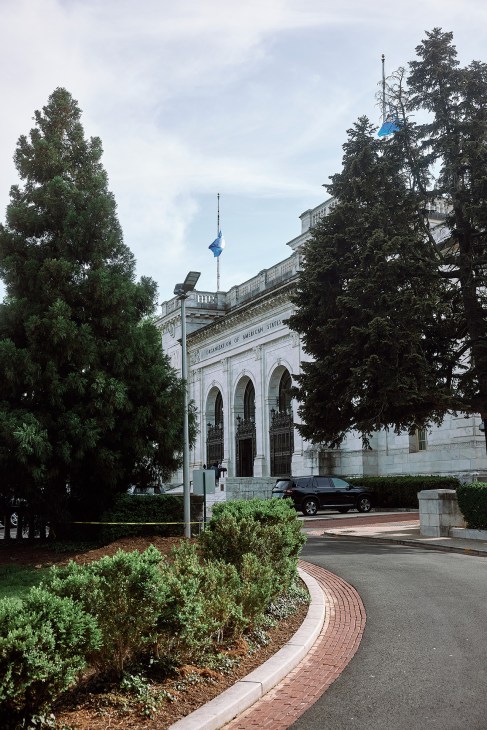
It will fall to this representative from the region’s odd duck, the only Dutch-speaking country with a mere 700,000 inhabitants, to keep the peace. Ramdin sees his unique perch as an advantage. “Small countries can play an important role in international diplomacy because we are not threatening,” he says. “Therefore, we can be an honest broker.”
A former assistant secretary-general, Ramdin knows the institution’s inner workings. He’s well poised to rein in the bureaucracy and the budget if given a green light for reforms at June’s annual assembly in Antigua and Barbuda. Regardless of what the US decides on funding, “The truth is that the OAS has been broke for some time,” says Sanders. Contributions are proportional to national income and several countries are in arrears. USAID cuts have already cost the OAS some $4m(€3.55m).
Ramdin says that his meeting with Rubio in March was “open and frank” and that he has met with other high-level US officials about the OAS’s future, which largely hinges on Washington’s whims. To make the case, Ramdin appeals to the turn-of-the-last-century vision of regional co-operation that manifested in bricks and mortar. From his new office, he can peer into the courtyard where the rubber-fig “Peace Tree” planted by William Taft in 1910 still grows. One Republican president oversaw the building’s inauguration; now Ramdin must ensure another Republican president doesn’t oversee its closure.
“We need to demonstrate to the US how building a united hemisphere will be in their benefit: a flourishing regional economy where investments remain within the Americas and where we support each other’s development,” Ramdin says. “That goes to the essence of what Washington and Bolívar wanted to achieve.”
Timeline
1823: US issues Monroe Doctrine, warning European powers against military intervention in the western hemisphere
1826: Simón Bolívar convenes Congress of Panama to unite fledgling Latin American republics
1889-1890: First International Conference of American States held in Washington
1910: Pan American Union Building opens
1947: Rio Pact on mutual defence for western hemisphere nations signed
1948: Organization of American States founded at conference in Bogotá, Colombia
1962: Cuba suspended from the OAS
1979: Inter-American Court of Human Rights established in San José, Costa Rica
1994: First Summit of the Americas held in Miami
2001: Inter-American Democratic Charter adopted in Lima, Peru
2017: Venezuela announces withdrawal from the OAS
2023: Nicaragua formally leaves the OAS
Makis Voridis is considered the most hardline representative of the right wing within New Democracy, the centrist ruling party in Greece. This is something that he does not deny. Οn the contrary: he likes to emphasise it, believing that his country needs to redefine its relationship with conservative thought and break the “ideological dominance of the left”. His appointment to the Ministry of Migration Policy is indicative of the Greek government’s intention to adopt a stricter stance on a fundamentally European issue. Voridis spoke to Monocle in his Athens office about Greece’s expertise in asylum services, co-operation with Turkey and the “active deterrence” policy of the nation’s coast guard.
You say that Greece has developed expertise in asylum services. Have other countries shown interest in learning from Greece?
Yes. In the past, EU member states such as Bulgaria, Hungary, Cyprus and the UK (before Brexit) requested bilateral assistance from Greece regarding asylum procedures. They recognised Greece’s progress in processing asylum claims quickly and effectively. Further collaboration is expected with the implementation of the EU’s Pact on Migration and Asylum, which is scheduled for June 2026. Member states will need to establish procedures for identification and asylum granting, and Greece can definitely play a leading role.
Turkey is a crucial part in European migration policy through its strategic location and as host to millions of refugees from the Middle East and North Africa. Dangerous smuggling networks operate within its borders. What is the current state of Greece-Turkey migration co-operation?
Collaboration between the Turkish coast guard and the Greek coast guard is generally good, which is one reason why migration flows from Turkey are relatively low. However, the readmission agreement is not functioning as it should. The agreement stipulates that migrants who come from Turkey, which is considered a safe country, should be returned if their asylum application is rejected. But Turkey is not accepting them back.

You’ve emphasised that deportations are a top priority in your agenda for the Ministry of Migration Policy. Could you explain your reasoning behind this focus and how Greece’s approach to migration is evolving? Are we witnessing a fundamental shift in policy?
I wouldn’t call it a new doctrine but rather a new phase. The actual policy shift happened during the first term of the Mitsotakis government, when the previous Syriza government’s approach – to essentially let everyone in, allow them to rest in the sun then move on to other European countries – was abandoned.
The first phase was establishing an effective system: control, identification and efficient asylum processing, a task that was successfully tackled by my predecessors. The second phase had to do with the realisation that integration of all incoming migrants was an unrealistic goal and that border control was essential. This led to the fence at Evros (almost eliminating land arrivals) and enhanced maritime border security through the coast guard.
For context, 18 per cent of Greece’s prison population consists of migrant smugglers and roughly one smuggler is arrested per day. Now we enter the third phase: returns. Deportations are one part of that.
You mean that there are also the so-called voluntary returns.
Exactly – voluntary and forced returns. I want to increase both but especially assisted voluntary returns. We must explain to those who remain illegally that the environment will become tougher with stricter criminal penalties, which will make it pointless to stay. They can instead choose to leave in a structured and supported way.
The facts
Migration flows to Greece have decreased by 27 per cent in early 2025, with arrivals dropping from 9,342 in Q1 2024 to 6,773 in Q1 2025. Main entry points include the northeastern Aegean islands (Lesbos, Chios, Samos), southeastern Aegean (Rhodes, Kos), and, increasingly, the central Mediterranean through Crete.
Stay illegally, face 18 months detention
You mentioned non-co-operative countries such as Turkey. Does this only apply to forced returns?
Correct. In voluntary returns, Greece, particularly the Ministry of Migration and Asylum, works closely with the International Organisation for Migration (IOM) and Frontex [the EU’s border agency], offering incentives such as plane tickets and financial support for relocation. In these cases, countries of origin cannot refuse repatriation.
What happens when a migrant refuses to leave and their home country won’t take them back forcibly?
That’s where the problem lies. When forced returns cannot be executed, we implement an 18-month administrative detention. The goal is deportation and the migrants are held until their removal is carried out or it’s determined that they can’t be. If nothing can be decided after 18 months, they are released. That’s why we need more effective penal measures.
So you’ll establish a stricter legal framework to prosecute migrants who refuse to leave after their asylum claim is denied, essentially driving them to choose voluntary return over prison?
Exactly.
When do you plan to implement this new legislation?
Soon.

You brought up the operational role of the coast guard. There are allegations of pushbacks. How do you respond?
We need to clarify that active deterrence is entirely legal.
As long as it doesn’t endanger human life.
Under no circumstances should lives be endangered. It’s not the Greek coast guard putting lives at risk but the smugglers. Active deterrence is legal and legitimate but some NGOs deliberately confuse the terminology. Active deterrence means that you can’t just enter a country whenever you want – the Greek state has a duty to protect its territory. Pushbacks are another matter.
Do pushbacks occur?
Greece has never admitted to such actions.
How do you respond to claims that the coast guard has performed dangerous maneuvers at sea?
The coast guard does everything possible to save lives endangered by smugglers, including many rescues. Claims to the contrary are provocative and insulting.
At a recent court ruling in Leipzig, Germany appeared to enable mass deportations to your country. How do you respond to this development considering Greece’s push for easier deportations to Turkey while Germany contemplates returning migrants to Greece?
It’s an issue that concerns us. So far, there have been no such requests. Also, it’s a matter that raises complex legal questions.
This discussion is essentially about the Dublin Regulation. Greece has long argued that the EU unfairly distributes the migration flows. What is your approach?
Simply this: we need a common EU policy. Returns shouldn’t involve just the country of first entry, they should go to the country of origin. We must act collectively as Europe. A collaborative return mechanism is essential – that’s what the new Migration Pact promotes. Otherwise, we’re just going in circles. Discussing how many migrants Germany should return to Greece when Greece and Cyprus already have the most asylum seekers per capita is a fruitless discussion.
What matters is that we use the EU’s leverage to reach out to countries of origin and demand they respect the return mechanism. Even if the EU doesn’t act collectively, multilateral agreements can still be pursued. Greece, Germany, Italy, Malta, Cyprus and Spain could, for example, co-operate and jointly approach destination countries within the framework of a multiparty negotiation.
The facts
Most migrants originate from Afghanistan, Syria and Egypt – with Egyptian arrivals predominantly being unaccompanied minors. Current data shows that 55 per cent of asylum applications are approved. Greece and Cyprus maintain the highest proportion of asylum seekers per 1,000 inhabitants among European countries.
The Leipzig court ruling revealed that Germany had previously avoided returning migrants to Greece due to concerns about living conditions. The court has now determined that migrants in Greece will have access to “bread, a bed and soap.” How do you respond to these characterisations of migrant reception conditions in Greece?
Both the specific decision of the German court and another related decision by the European Commission essentially acknowledge the significant progress that Greece has made on a number of issues concerning the management of migration. Claiming that a migrant sent to Greece would die of hunger is certainly not flattering for the country, so in that sense this is a positive development, even if it is not convenient in terms of migration policy.
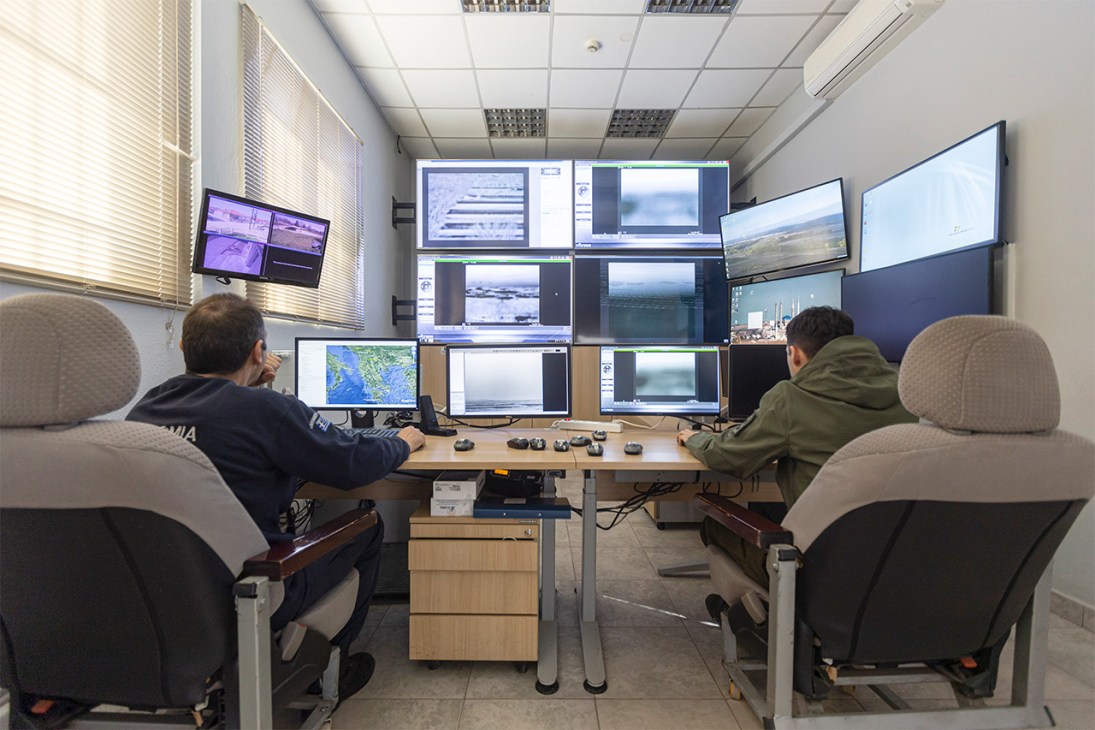
Regardless of your approach or ideological stance on migration, there is an objective reality. That is Europe’s demographic crisis, with Greece being among the countries facing the most severe problems. How do you approach this issue and how do you perceive the role of migrants in the Greek economy?
First of all, I reject the notion that Europe will solve its demographic problem by importing migrants. The answer to the issue is to look at what incentives we can offer to increase European populations. In other words, we must look at how Greeks and Europeans can be encouraged to have more children. This is a matter of family and demographic policy. There is no other solution.
Regarding the labour issue, the problem is exactly that European migration policy must aim at two levels: controlling illegal immigration and organising legal immigration. Legal migration must be linked to the needs of our production and supported by a mechanism through which people come here by our selection under strict and rational criteria. They will be paid, insured, work for a specific period and then return to their homelands and families. If needed, they will return again.
Recently, both in Greece and elsewhere in Europe, migration policy has become stricter. One reason is the mass migration flows of previous years, which have put pressure on local communities. Has the rise of anti-European parties also played a role?
In reality political results are produced by the citizens’ vote, which might be shifting in the direction that you describe. But why? Because leftist and social-democratic political forces were not listening to them. These parties reached the point of trying to paint the voters as crazy.
If I go to a working-class neighbourhood and my constituents tell me that living conditions are difficult and that they cannot let their children play in the public square because it has been taken over by illegal migrants who behave offensively toward their daughters and I respond “you are a racist,” then it is inevitable that a political shift will occur. Whereas I should have addressed the problem faced by our citizens. Isn’t that the very dialectic of democracy?
Elective government is a wonderful thing because it is built on a dialectical relationship with the public. The difference between Greece and other European countries is that it had the necessary political reflexes to avoid this risk.
How would you describe migration policy in Greece today in a single phrase?
Strict but fair.
To differentiate it from its global spin-offs, the Swiss version of Art Basel was rechristened Art Basel in Basel in 2013. Despite the repetitive nature of the title, the fair, on from 19 to 22 June, remains the pre-eminent art event of the year. This year’s edition promises to live up to its reputation with 289 galleries from 42 countries and territories, new sections and a public reception for the first Art Basel Awards, which celebrate trailblazers across the sector.
Outside of the fair, there’s a host of buzzy satellite events and museum shows that are worth a visit, including your last chance to see a major exhibition dedicated to the artist-architect Le Corbusier in Bern. Here, we pick the best of the bunch, take the temperature of the art market with the fair’s director and spill the best spots for a cocktail at the end of a long day in the halls of Messe Basel.
Q&A
Maike Cruse
Director, Art Basel in Basel
This is the second edition of Art Basel in Basel with Maike Cruse in charge. The German-born director previously worked as communications director at Art Basel between 2008 and 2011. Here, Cruse reveals what she’s looking forward to this year, takes a view on the art market and offers her favourite place to go dancing in Basel.

What are some of your highlights?
Nine galleries are participating for the first time in the gallery sector, which is always exciting. I’m particularly looking forward to Galerie Le Minotaure from Paris, which will focus on 20th-century geometric abstraction and works by László Moholy-Nagy, as well as The Third Gallery Aya from Osaka, which is presenting pioneering Japanese female photographers. The new sector, Premiere, will see galleries showcase works from the past five years – ultra-contemporary pieces from emerging voices. There, the Gypsum Gallery from Cairo will bring together two artists whose work is inspired by volcanic landscapes.
What else is new?
This is the first Art Basel Awards, which is an all-year initiative that celebrates boundary-pushing artists, curators, museum patrons and others who are driving the future of contemporary art. In Basel, we will celebrate our 36 medallists and bring them together for public talks and presentations.
How does Art Basel in Basel retain its top spot in the art calendar?
It’s the quality of the fair. We have a rigorous selection process and it’s the Art Basel fair with the broadest programme. This includes galleries presenting modern art but also we have sectors, like Unlimited [dedicated to monumental and immersive works], which are unique in the world of art fairs. Another sector, Parcours, will again be curated by Stefanie Hessler and spread along Clarastrasse. These initiatives help to make the fair such a unique experience.
Your view on the art market today?
What we are seeing at the moment is cautious optimism. There has been a democratisation of the market: we are seeing new and younger buyers coming into it. Art fairs are still one of the main platforms for galleries to meet those new buyers, so they remain very important.
Where do you go out in the city?
My favourite is the Campari bar at the Kunsthalle restaurant. Head to Chez Donati for Italian food, Peng for dumplings or Chanthaburi for the best Asian food. And for dancing, nothing beats techno club Nordstern.
Three new galleries to visit at Art Basel
Art Basel has a strong track record of championing emerging galleries (writes Rory Jones). This year there are 18 new galleries being thrown into the mix. Here, we pick three that are worth checking out.
1.
Gallery Artbeat
Tbilisi
Keeping things close to home, Gallery Artbeat offers a solo exhibition by Georgian artist Nika Kutateladze. His contemplative paintings – typically darkly pigmented, otherworldly portraits – take inspiration from his time spent in small rural communities in the mountains of Georgia. The immersive presentation will be staged in a reconstructed living room typically found in a Gurian village.
Find the gallery in the Statements section
2.
Polka Galerie
Paris
Italian photographers Luigi Ghirri and Franco Fontana will be brought together at the booth of Paris’s Polka Galerie. The Ghirri prints examine landscapes as an extension of the people who inhabit them in his trademark naturalistic manner. In contrast, his contemporary Fontana takes his cue from stylistic movements such as minimalism and abstract expressionism.
Find the gallery in the Feature section
3.
Galerie Eli Kerr
Montreal
The first gallery hailing from Montréal to exhibit at the fair in its 55-year history, Galerie Eli Kerr will show an intriguing installation by Lebanese video artist and writer Joyce Joumaa. Joumaa’s work explores Lebanon’s energy crisis through repurposed circuit-breaker boxes, which showcase photographs of quotidian urban scenes in Beirut and Tripoli.
Find the gallery in the Statements section
Three museum shows to catch
There is plenty to enjoy under the roof of Messe Basel but if you need a break from the hubbub, these are the museum shows to see while you’re in town.
1.
‘Vija Celmins’
Fondation Beyeler, Basel

A calming contrast to the fair is always to be found at Basel’s Fondation Beyeler, which has idyllic surroundings. During Art Basel, it will present a comprehensive retrospective of Latvian-born artist Vija Celmins. The show will bring together works from the 1960s to the present day and includes sculpture, painting and drawing.
15 June to 21 September
2.
‘Midnight Zone’
Museum Tinguely, Basel
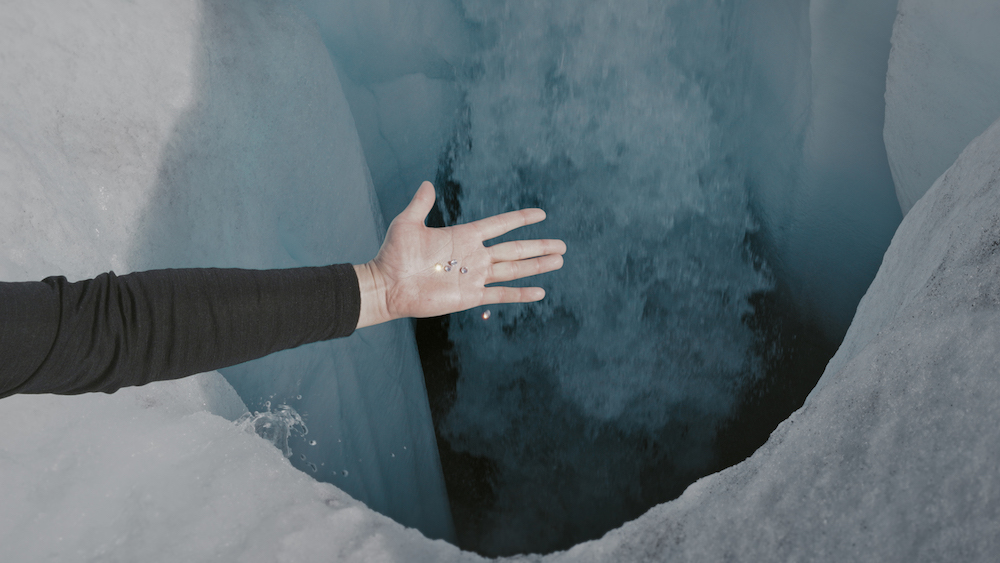
“Midnight Zone”, French-Swiss artist Julian Charrière’s solo show at Museum Tinguely, muses on how humans inhabit the world and how, in turn, the world inhabits us. Underwater ecologies are presented through photography, film and sculpture. All promise to envelop you in a kaleidoscope of blue and encourage reflection on our relationship with the natural world.
11 June to 2 November
3.
‘Le Corbusier. The Order of Things’
Zentrum Paul Klee, Bern
Just an hour’s train ride from Basel, the Zentrum Paul Klee in Bern has devoted a major exhibition to Le Corbusier. The show includes both iconic pieces and unseen works, and is a chance to revel in the sketches and original designs of this pioneer of modern architecture.
Until 22 June

Artist spotlight
Lonnie Holley
The work of American septuagenarian artist and musician Lonnie Holley has gained well-deserved traction in recent years. At this year’s fair, London-based gallery Edel Assanti will present a solo show of his colourful paintings and unusual sculptures made from salvaged materials. Holley’s artistic practice also includes film and music so it’s worth visiting his installations in the Unlimited sector to grasp the diversity of his work. His art reflects his extraordinary life, which includes being incarcerated at the Alabama Industrial Home for Negro Children in his youth.
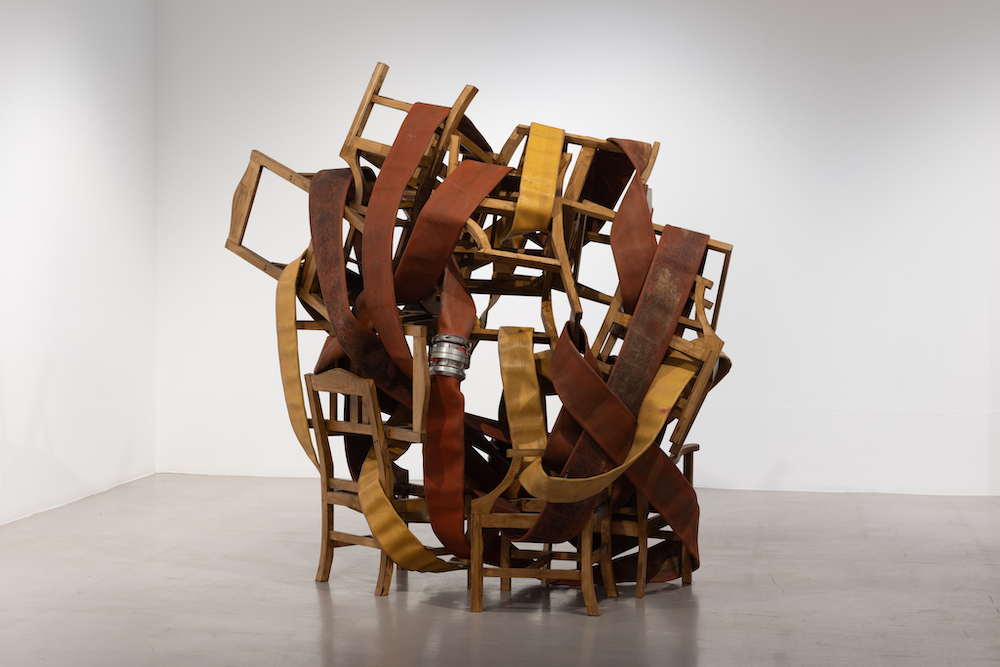
“He is someone who has lived a life that few of us could possibly imagine,” says Charlie Fellowes, co-founder of Edel Assanti. “And he delves into these experiences to unpack them in a way which invites meaningful discourse on race, ancestral memory and our engagement with technology. That is something that we have to cherish.”
Q&A
Lee Cavaliere
Director,Volta Art Fair
Alternative art fair Volta is also known for promoting cutting-edge creativity (writes Millie McArthur). This year, the fair will expand into a new venue at Hall 4.U, Messeplatz 21 in Basel. We speak to artistic director Lee Cavaliere about the legacy and purpose of Volta, what visitors can look forward to at this year’s edition and his favourite restaurant in the city.
How does Volta compare to other fairs?
We don’t see ourselves as a satellite. This is our 20th year and it’s a testament to our agility and connectedness with the emerging and middle market. We’ve also got a lot of greenery, with trees in the aisles. It’s calming.
We have some interesting models of galleries this year. Some started as artist-run spaces. Others are part of a foundation. There
are all kinds of different stories.
How has the fair changed?
We’re now in a bigger venue and we have 70 galleries from 29 countries. It’s still a digestible size, which gives people time to meet the galleries and artists.
What is your favourite spot in Basel?
I love Basel because it’s walkable and you can easily discover things. I love to go to the river for a barbecue and a swim. Another option is Museum Bistro Rollerhof, which has seats on the square by Museum der Kulturen so that you can sit, eat and watch the world go by.
Volta runs from 18 to 22 June; voltaartfairs.com
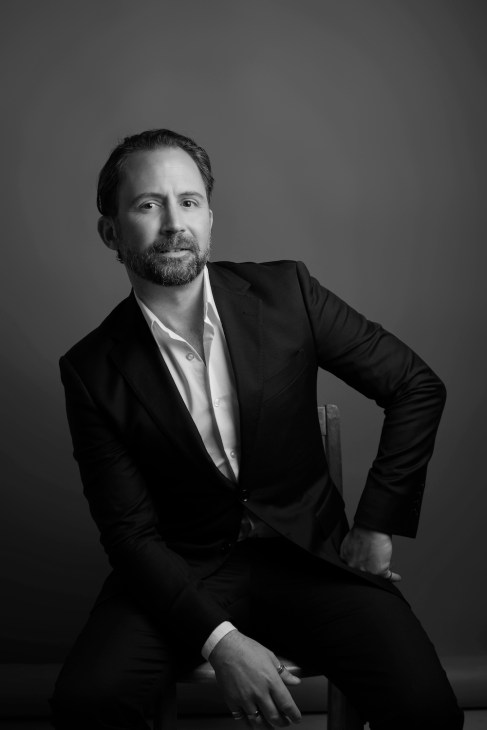
1.
The conversation starter
MACAAL
Morocco
Othman Lazraq guides us under an arch made from mud bricks – part of a structure that sits below the central atrium of his family’s private museum. “Installing this was a mess,” he says. “Artist Salima Naji built it, brick by brick, one month before our reopening at the start of the year.” Touching the temple-like structure, which emulates ancient building techniques from places such as Mali or the Maghreb, Lazraq offers a clue to the museum’s mission. “This isn’t just heritage,” he says “It’s alive.”
The Museum of African Contemporary Art Al Maaden (MACAAL) opened in 2016 as an extension of the Lazraq family’s art foundation (the family is one of Morocco’s largest property developers). The museum brings its extensive art collection, which now spans 2,500 works, into public view.
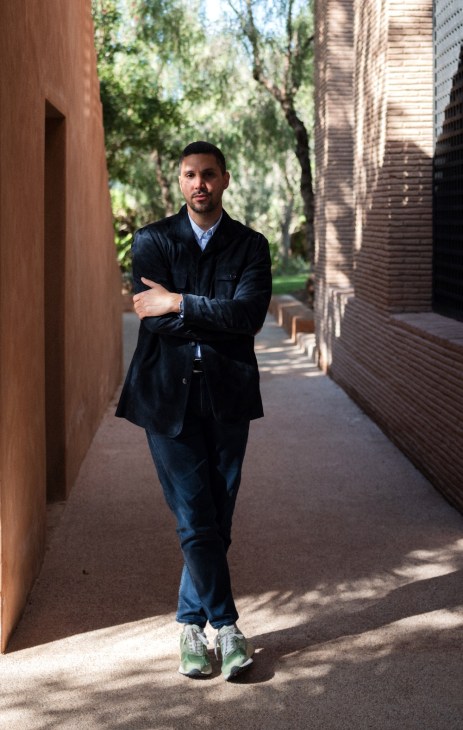

Part of Lazraq’s job as both founder and director has been reconciling political and social sensitivities around history and gender with the collection’s occasionally transgressive content. “Every cultural institution is placed in the middle of social discourse,” he says. “But our approach is always deft and inclusive.” In Morocco, this attitude is vital as the majority of the population has never set foot inside a museum. Special attention has been paid to ensure that the audience’s questions and concerns are answered and assuaged by MACAAL’s friendly guides, and additional information has been designed to deepen dialogue.
After seven years finding its footing, the museum was closed by Lazraq in 2023 as a chance for a structural and conceptual reset. Serendipitous timing meant that the entire collection was safely packaged and stored only two weeks before a magnitude-6.8 earthquake rocked the region. During the two-year hiatus, everything from the museum’s financial model to the curated programme was scrutinised. A scenographer was enlisted to redesign the layout to be more accessible and playful; display cases were lowered to child height and the museum’s artistic director, Meriem Berrada, commissioned video documentaries for each of the permanent collections’ seven sections to provide an additional layer of visual narration.

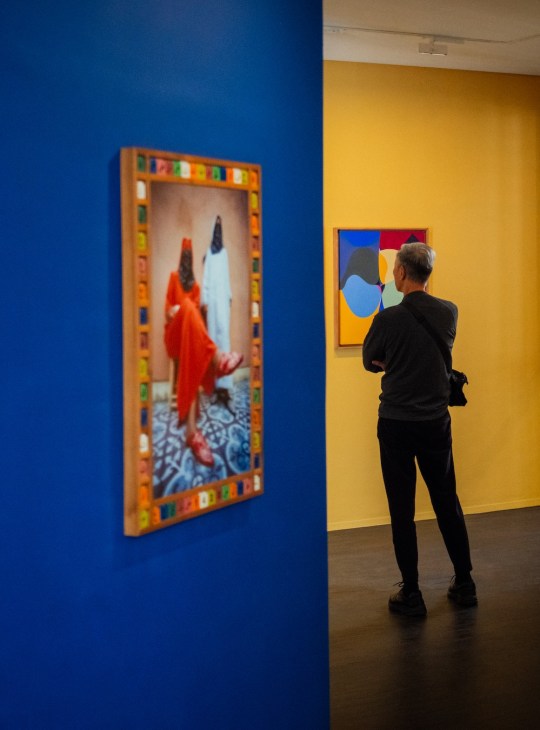

The multidisciplinary and occasionally controversial works (one playful piece explores the taboo subject of folkloric witchcraft) challenge ingrained perceptions around African art but there’s a distinctly celebratory tone here too. “I’m a proud Moroccan but there’s a lot of missing context around who we are and where we’ve come from,” says Lazraq. “I want to make our museum as open as possible, to spark conversations and to stand out as a neutral, safe space for reflection and imagination.”
On the edge of a golf course about 15 minutes’ drive from Marrakech’s medina, MACAAL’s setting is serene. Lazraq, who has led the family’s art foundation for over 15 years (since the age of 21) is always rethinking how the museum can work. Every Friday it hosts a family-style couscous lunch, inviting the community and anyone else who wants to experience culture through the disarming focus of food. “I never wanted to create a highbrow, exclusionary space,” he says, pointing to the employment of “cultural mediators” tasked with bringing groups from schools, women’s associations and social organisations for workshops and visits. “We’re creating a true social ecosystem. Hopefully we’re also becoming a source of inspiration for the next generation.”
macaal.org
2.
The audio-visual space
Efie Gallery
Dubai
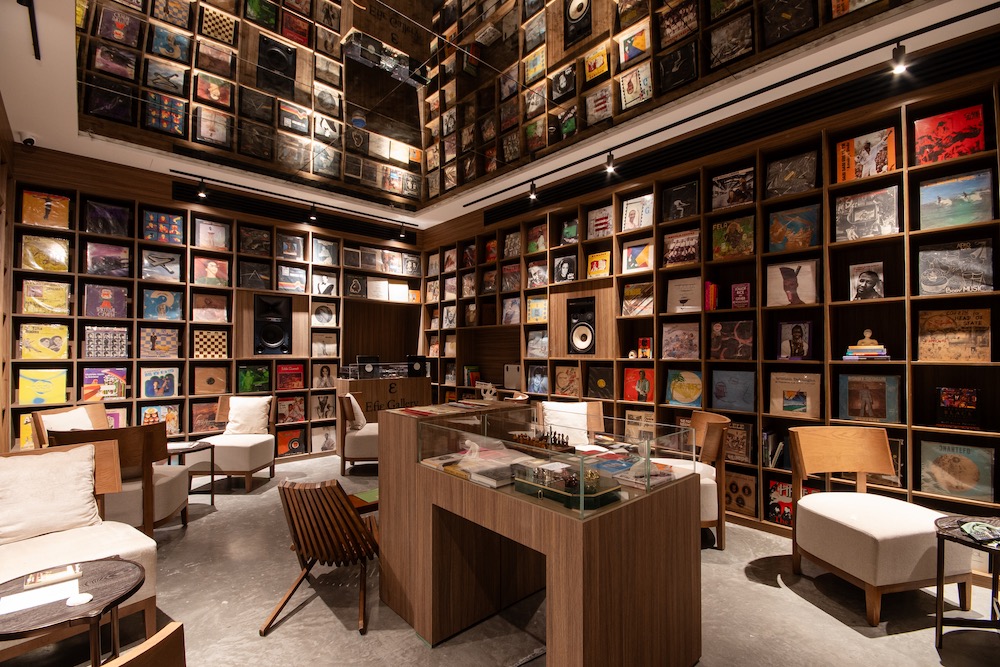
The Ghanaian director of Dubai’s Efie Gallery, Kwame Mintah, doesn’t like looking at art in silence. “Galleries tend to be managed by creative people but they can feel sterile without any music,” he says. Mintah grew up listening to genres such as highlife and Afrobeat and decided to weave those sounds into the artistic experience of his gallery. Founded in 2021 by Mintah with his mother, Valentina, and brother, Kobi, Efie Gallery has had a permanent space in Dubai since 2022. Now the family has moved its operations to a bigger outpost, which will provide more space for their 2,000 vinyl records and diverse roster of visual artists of African origin.
“The commercial art world can be sceptical of unorthodox forms,” says Mintah. He initially wanted to downplay the listening concept but the enthusiastic reception received by a smaller version in the original venue means that it now takes centre stage in the new location. “Growing up in Ghana, art wasn’t contained in galleries,” says Mintah. “It was all around us.” The new space’s immersive listening room has five hi-fi speakers. Visitors will find shellac and vinyl records and cassettes, dating from the 1940s until the present day, including those by Ghanaian musician ET Mensah, a pioneer of the highlife genre. Originating in the 19th century, highlife laid the foundations for many popular genres, such as Afrobeat.
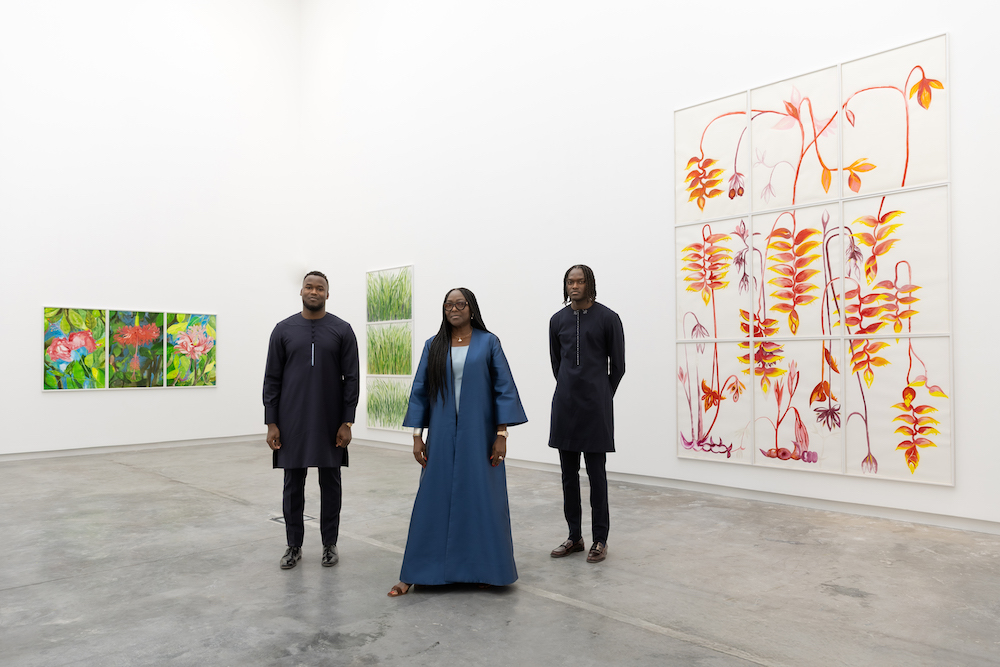
Mintah hopes that the new gallery will bolster the underexplored cultural connections between the UAE and Africa. “Dubai is a blank canvas where you can construct your own narrative of African art,” he says. Efie is showing the likes of Ghanaian sculptor El Anatsui, Kenyan visual artist Maggie Otieno and Ethiopian photographer Aïda Muluneh. Each has curated ambient playlists to accompany their shows.
“The Efie Gallery isn’t a satellite for the African diaspora,” says Mintah. “We want to engage directly with the region. With our unusual gallery concept, we leaned into the unknown. Ultimately we hope to add something fresh to the canon.”
efiegallery.com
3.
The regional showcase
Ichion Contemporary
Japan
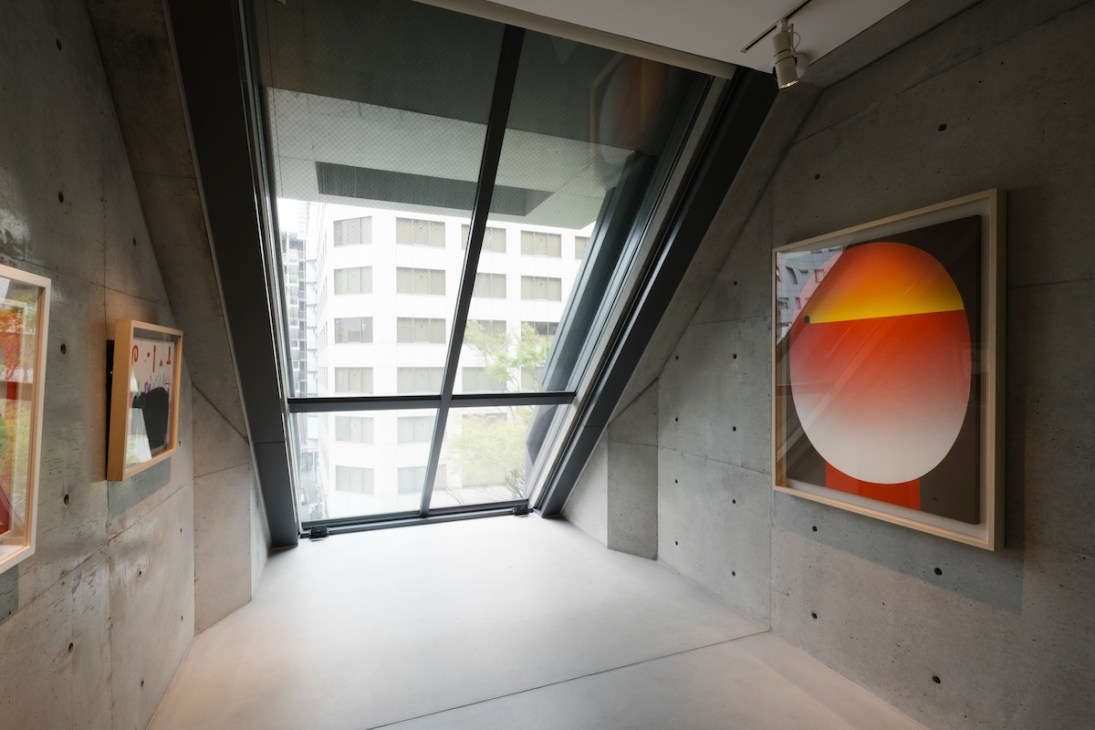
Sandwiched between an office building and a church, Ichion Contemporary’s slim, ambitious architecture celebrates the avant-garde spirit of Osaka. The new gallery, which opened in January, was founded by Ichion Jo, the 35-year-old vice-president of Jo’s Auctions. Originally dealing primarily in Chinese antiques, the Osaka-based auction house has become increasingly active in collecting and trading modern art in recent years, including that of the Gutai group and other works from Kansai.
“We noticed that while Japanese postwar artists were becoming more highly valued, they were not so in the international market,” says Jo. “But after the Guggenheim exhibition in New York (Gutai: Splendid Playground, 2013) their prices jumped in an instant.” Sensing a shift in the market, Jo began researching and planning a gallery to showcase such works. And when a narrow patch of land, barely four metres in width, became available in Nozaki-cho, he approached renowned architect Tadao Ando to turn it into a reality.
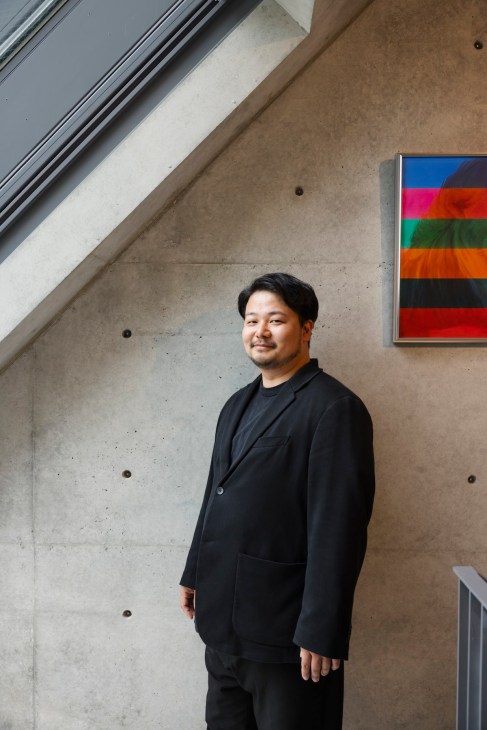
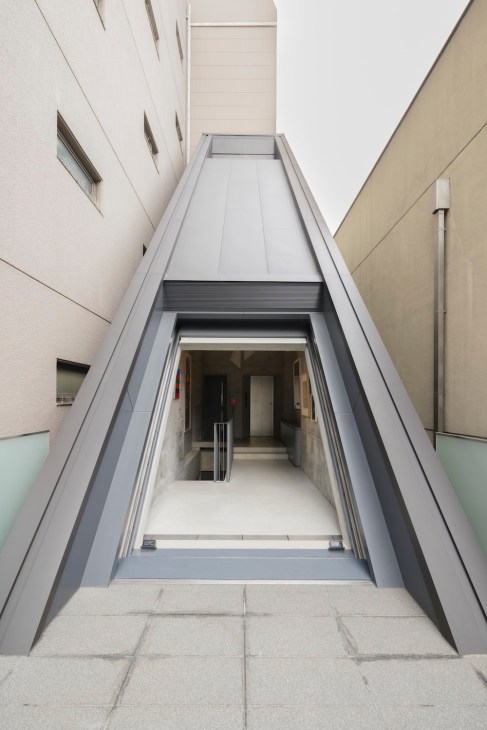

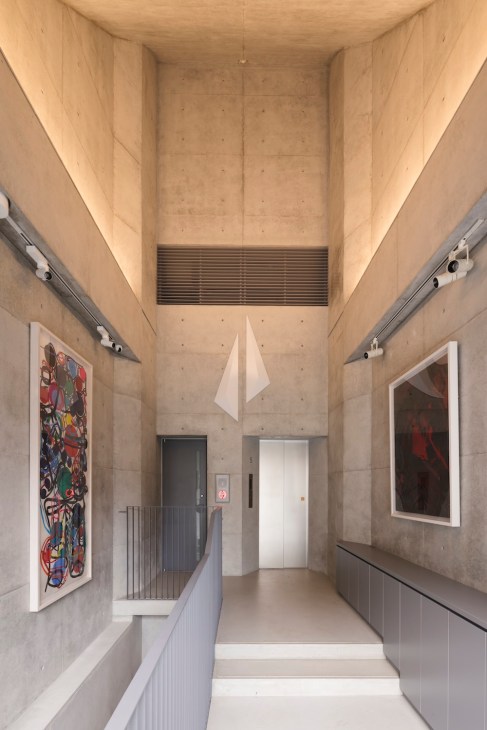
The distinctive concrete building offers a unique experience across six levels, placing viewers close to the works. The inaugural exhibition showcased the Gutai Art Association, while future exhibitions will focus on Kansai’s pioneering avant-garde artists, as well as the emerging talents building on their legacy. The gallery’s unconventional setting and innovative spirit promises new discoveries for artists and audiences alike.
ichion-contemporary.com
4.
The photographic archive
Photo SeMA
South Korea
A building that mimics the contours of a camera aperture makes for a striking architectural statement – and a fitting venue for South Korea’s first public photography museum. Opening on 29 May, the Photography Seoul Museum of Art (Photo SeMA) encompasses about 7,000 sq m across three above-ground and two subterranean levels. The building was designed by Vienna-based architect Mladen Jadric and realised in collaboration with South Korean architect Yoon Geun-ju, director of 1990uao. Drawing inspiration from the mechanism of a camera aperture, the museum’s twisted monolithic form departs from conventional right angles, with walls and floors rising fluidly along a curve. Jadric says that there are more similarities between the practices of architecture and photography than you might expect. “Photography is an image drawn with light and architecture is a play of forms unfolding under light,” he tells Monocle.


Photo SeMA’s director, Han Jung-hee, says that the museum’s mission is “to establish the 140-year history of Korean photographic art”. The institution identified more than 2,000 photographers active between 1880 and 1980 and acquired about 21,000 images and archival materials. “Our goal was to collect landscapes and portraits that offer a visual record of their era,” says curator Son Hyun-jung. Those procurements included the archive of Im In-sik, a photographer of the Korean War, and Park Young-sook, a pioneering figure in feminist photography. Photo SeMA will finally bring into focus the rich history of South Korean photography.
sema.seoul.go.kr
5.
The Italian outpost
Thaddaeus Ropac
Milan
The neoclassical Palazzo Belgioioso is the sumptuous location for Austrian gallery Thaddaeus Ropac’s new Milan outpost. Elena Bonanno di Linguaglossa, its executive director, is brimming with excitement when she shows Monocle around the unfinished site. “I’ve never been able to hold a brush but I’ve always had a curiosity for contemporary art,” she says. “My grandmother worked as an assistant for Belgian painter Paul Delvaux. I was fascinated by the stories she told me.”


For Bonanno di Linguaglossa, taking a role under Thaddaeus Ropac was an easy decision. “There’s no one like him in the industry,” she says. When Monocle visits, the space is still under renovation but the neoclassical crown mouldings and large bay windows overlooking the quiet courtyard give a taste of what’s to come. Works will be exhibited in two grand rooms on the first floor, and sculptures will be displayed in the public courtyard.
Milan has a growing presence of international artists, buyers and gallerists tapping into the community of wealthy collectors who have chosen Italy’s financial capital as their home. “It’s the moment to be here,” says Bonanno di Linguaglossa.
ropac.net
6.
The photographer’s home
Studio Naegeli
Gstaad
Over the past century, the timber-hewn chalets that line Gstaad’s main promenade have slowly transformed into a string of luxury fashion maisons but Chalet Naegeli is a notable exception. Founded in 1914 as an Alpine photography repository, it’s the former studio-residence of photographer Jacques Naegeli, who documented Gstaad’s transition from humble farming village to glitzy ski resort.
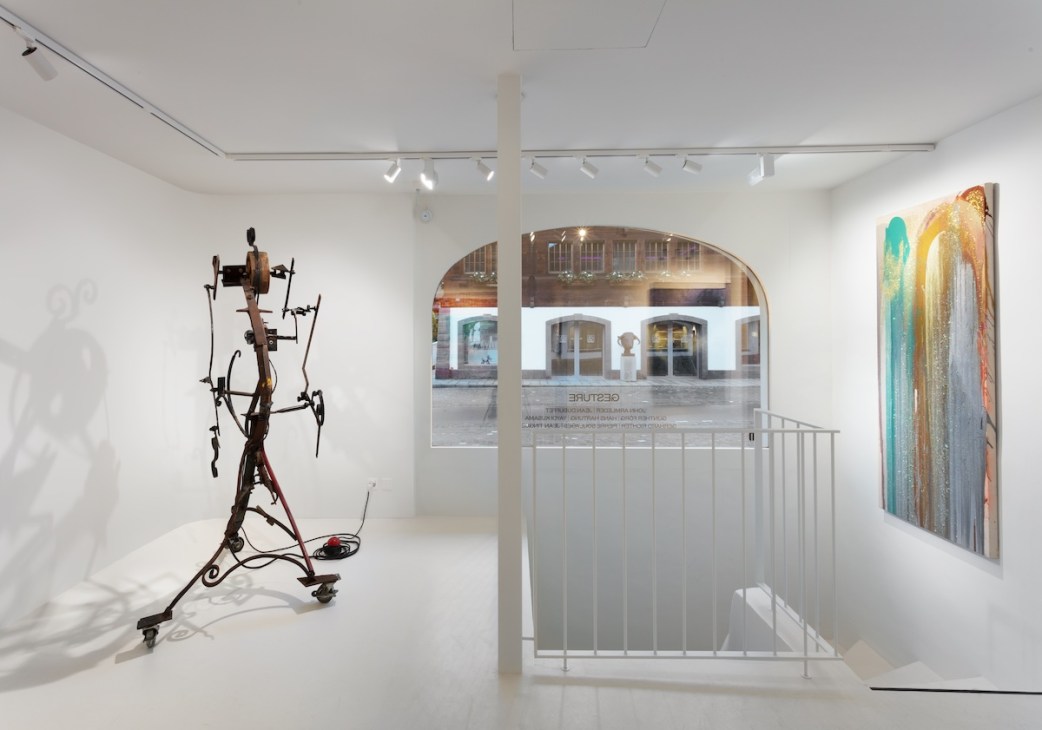
The premises became a bank in the 1970s but, last winter, Naegeli’s great-grandson, Christian Högl, and his wife, Anna, brought the chalet back to life as Studio Naegeli, a documentation project aimed at reviving the photographer’s archive.
The Högls aren’t just looking to the past. The two-storey site will host programmes alongside a global roster of galleries focusing on modern art. When Monocle stops by, the debut collaboration with Galerie Mitterrand in Paris is preparing to open and 15 artworks have been shipped over. These include works by François-Xavier Lalanne, Jean Dubuffet, Günther Förg and Yayoi Kusama.
There is momentum here to refocus Gstaad’s identity around its artistic heritage, and the town has buy-in from an international crowd of holidaymakers. Visitors from France, the US, Canada and Hong Kong pass by when Monocle visits Studio Naegeli. “A lot of visitors here have second homes in Gstaad, so the tourism feels more personal,” says Anna, who previously worked as international liaison for the Moscow Art Fair and as a curator in Bern. “Gstaad is home to a concentrated group of collectors, which encourages a friendly climate for purchasing art.”
Just like Jacques once did, Christian and Anna live above their beloved chalet-gallery. “When Jacques lived here, the house was alive with creative spirit,” says Anna. “We hope to reconnect Chalet Naegeli with its artistic and cultural heritage.”
studionaegeli.com
For years the media was obsessed with all the things that the millennial generation was supposedly killing, from fabric softener and home ownership to mayonnaise. But now their successors, Gen Z (those born between 1997 and 2012), have been handed an even graver charge: being unable to dance. In a series of videos that went viral on social media in April, incredulous observers filmed groups of young people standing completely still or glued to their screens on the dance floors of nightclubs. How is it that the so-called Tiktok generation – named for an app that owes much of its success to carefully choreographed dance challenges – is incapable of losing itself to the music?

Well, for one, outside of North Korea or a Texas rodeo, dance floors are not made for regimented routines.They’re a place to escape the lines of life, anonymous amid a mass of bodies and beats. This abandon is much more difficult if you’re under constant surveillance, of course. When you grow up under the all-seeing eye of social media, you develop a fear of being filmed doing something stupid. We used to dance like no one was watching; now we dance like everyone is. In Europe clubs are increasingly insisting on placing stickers over phone cameras so that nobody has to worry about ending up a laughing stock the next day.
Then there’s the fact that clubbing is facing an existential crisis, in part fuelled by the younger generation’s general apathy towards nightlife. In the UK alone, some 400 night clubs have closed over the past five years, about a third of the country’s total. We can blame the pandemic for a chunk of that (and we can blame consequent lockdowns for the younger generation missing out on early clubbing experiences) but there are other factors at play. A major one is that young people can’t afford to go out like they used to: Danish nightlife conglomerate Rekom Group’s research suggests that over 77 per cent of British people have cut down on late nights out due to the cost-of-living crisis.
Given that they came of age during successive lockdowns and were thrust into a world in which they can’t afford to go out, how can we expect Gen Z to know what to do in a club once they get there? Many, it seems, can’t even rely on the social lubricant that is alcohol. A recent survey of 18 to 24-year-olds by market-reserach firm Yougov highlighted this cohort as the most sober group among adults, with 39 per cent of respondents not drinking any alcohol at all. And when they are drinking, Gen Z are increasingly drawn to strange concoctions, such as Malibu and milk. I can’t imagine a worse time to throw your body around than after a big swig of any combination of milk and liquor. As for the other kind of white stuff, some reports claim that Gen Z are less likely to consume class A drugs than previous generations. Though some say otherwise, with anecdotal reports suggesting that younger people favour drugs such as hallucinogens and ketamine, both of which aren’t generally associated with the desire to dance.
Ultimately, social media will never tell us the full story. “Every new generation has a subtly different relationship with club culture compared to those who came before them,” Ed Gillett, author of Party Lines: Dance Music and the Making of Modern Britain, tells Monocle. “There have always been boring, sterile clubs full of disinterested people and rubbish dancers.” That said, the current generation of aspiring party people does face a number of obstacles to throwing their hands in the air like they just don’t care. And if the dance floor can so easily be murdered, what chance does mayonnaise have?
The art of the eerie
Pol Taburet
Paris
When Pol Taburet was a child, his mother would take him to look around museums. It was a natural choice of activity for her: she was a museum guard at Musée d’Art Moderne de Paris. “She wasn’t educated in art,” says Taburet. “But working all the time in those rooms, you become sensitive to the paintings.” That sensitivity, and an insatiable enthusiasm for the medium, has clearly trickled down.
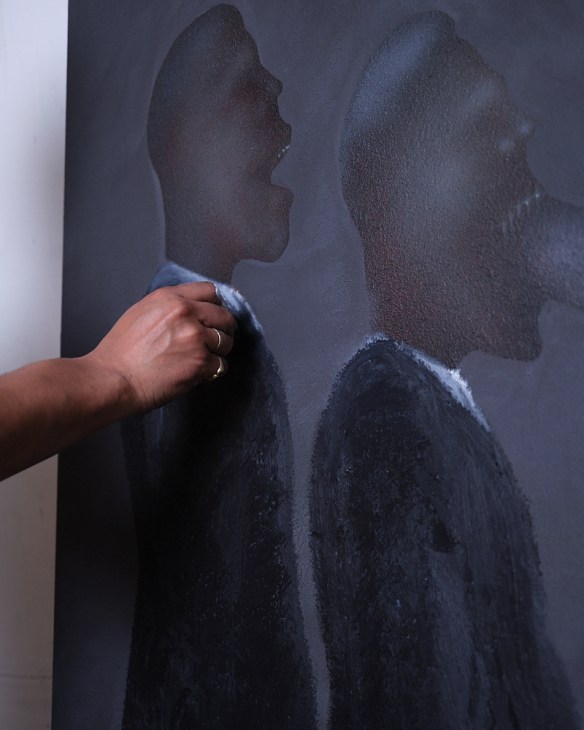
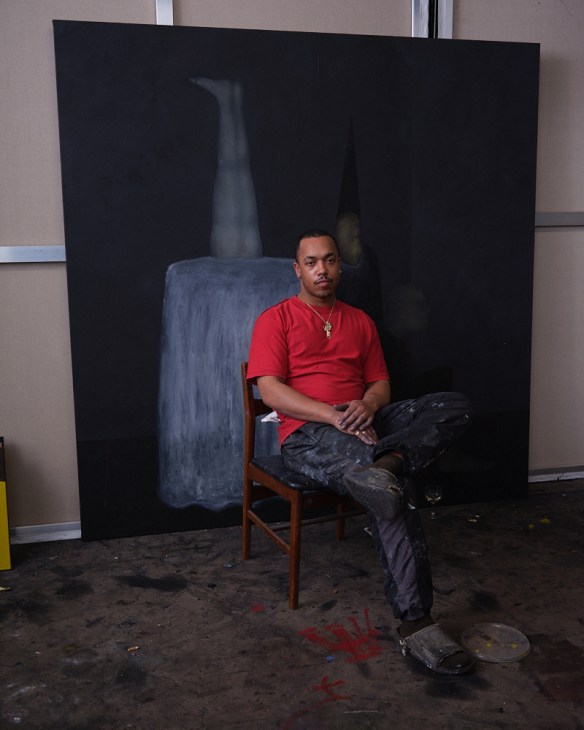
When Monocle visits Taburet’s studio on the outskirts of Paris, we catch the 28-year-old in the middle of a busy period. He’s just wrapped up a solo exhibition at Madrid’s Pabellón de los Hexágonos – huge paintings that were created specifically for the church-like space. Now he’s finalising the paintings and sculptures for a show at Schinkel Pavillon in Berlin. Next, he’ll be off to Brazil to spend two months creating work to display at the São Paulo Biennial from September.
In his paintings, Taburet typically depicts ghostly figures. Sometimes they sit around the bright white of a tablecloth, in other works figures float and body parts freewheel across the canvas. For someone as warm and effervescent as Taburet, the works seem to have a dark underbelly. But he insists that it’s honesty, rather than darkness, on show. “I am trying to paint something real,” he says. Even if there is a sense of violence within the work, there’s a softness to it too. It’s “violence with gloss on top”, he says. “It makes it easier to look at.”
Francis Bacon is an obvious comparison but Taburet has found more inspiration in the likes of Edvard Munch or Roberto Matta. Taburet is also influenced by what he finds in books such as 1993’s L’art Océanien, a doorstopper full of interesting shapes and faces. But if he had to pick one enduring influence, there’s little competition: South Park. “When you want to talk to children, you have to have this efficiency of information,” he says. “South Park is the best for that, only using round, square and rectangle shapes. But so much is happening.” Taburet thinks that it’s this meeting of venerated art history and childish cartoons that has led to his individuality as an artist. He’s humbled by his success and how his work – “this dark humour, these freaky images”– seems to speak to so many people.
Parts of a whole
Claire Oswalt
Austin
Texan painter Claire Oswalt ascribes to the theory that all art is generated by the subconscious. “People often ask me where the inspiration for my colours comes from,” she says from her studio in Austin. “And I have absolutely no idea.” After long stints in Los Angeles and New York, the 46-year-old returned to her hometown. Though the Texan capital is an enclave of creativity and progressivism in a state not famed for such things, it is a very different environment from the two megacities that dominate America’s artistic output. Still, any attempts by Monocle to impose a geographical stamp on Oswalt’s work are politely rebuffed. “I don’t feel like my location has much to do with it,” she says. “There’s a quote from the Wim Wenders’ movie Wings of Desire, in which a character says, ‘‘Behind closed eyes, close your eyes once more.’ And I feel like that’s the place from which I’m working.”
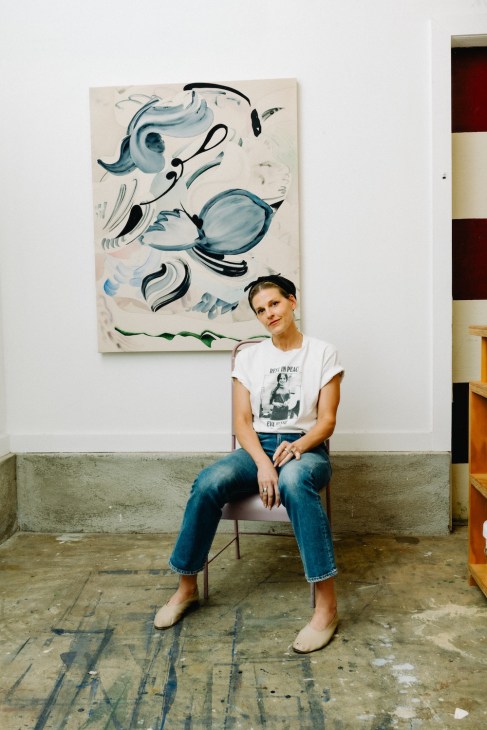
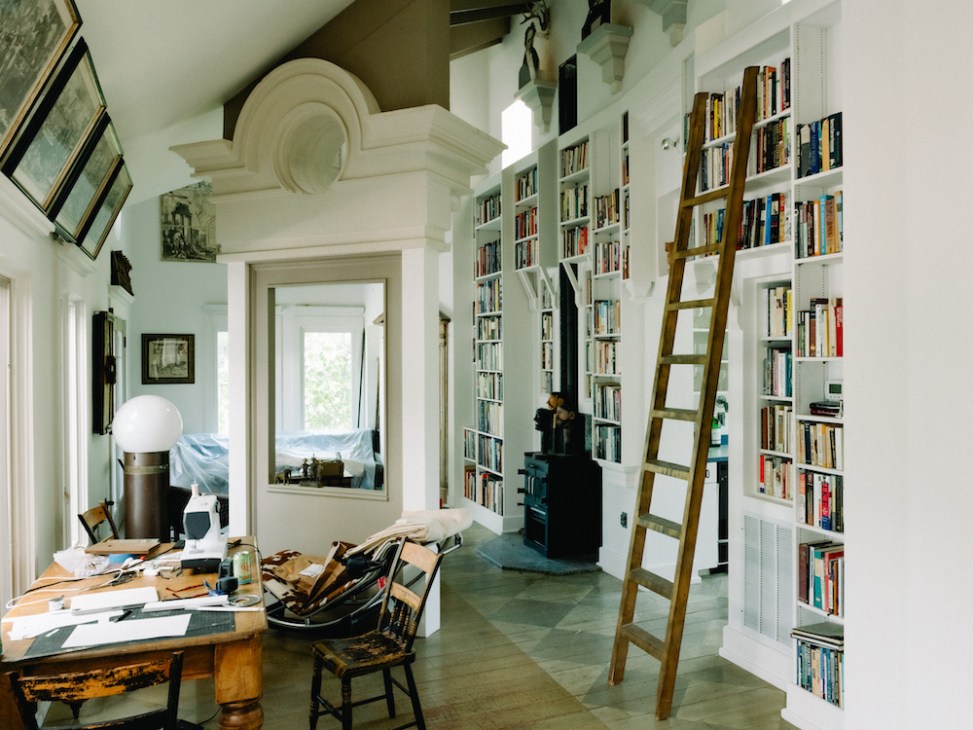
Despite this, the colours of Oswalt’s recent output seem to be more informed by the natural than the interior world. And though the scale of the collaged paintings speaks to the western US tradition of grand vistas, their nature and construction are anything but brash or broad brushstroke. Indeed, each honours “that tiny moment of making that first mark on the paper”. This first mark comes after a painstaking process involving the accumulation of dozens, or even hundreds, of pieces of paper piled high on her studio floor. “It’s quite a live thing,” she says. “When I start to move them around, that’s when these abstract pieces emerge… And the edges of these collage papers become the seams of my work.”
Oswalt attributes the methodical, even mathematical, way of producing work to her grandparents. Her grandfather was an engineer who made stained glass in his free time, while her grandmother was an oil painter. “And that kind of dichotomy of math and painterly aspects carried through for me.”
She describes the final process of bringing all the components of her collages together as symphonic. “I’m fascinated by this idea that, especially in a symphony setting, you can have one instrument, one note, and then you put it all together and you’ve created an opera.”



